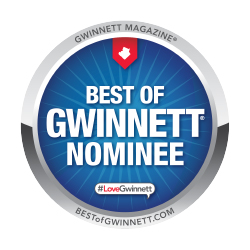Running a small business or launching a start-up company is very time consuming. Most of the time it feels as if there aren’t enough hours in the day to get the job done. Because of this, many small businesses skip some of the most important details in securing their success. Market research is one of these crucial steps that many businesses omit. How can you go ahead with a plan to sell a product when you don’t know if it’s going to sell? How can you set a price when you don’t even know your customer’s price sensitivity or your competitors’ prices? Market research, although time consuming and frequently omitted by small companies, is largely necessary to ensure a business’s success. This article will define market research and provide a step-by-step approach to tackling the subject as a small business.
Market Research – An Introduction
Market research is the process of collecting data on consumers, competitors, marketing and sales channels, and the forces affecting your industry. Consumer research usually contains data on basic customer characteristics and their buying behavior. Competitor research includes gathering data on product lines and pricing, competitors’ current advertisements, and some perceptual mapping. Channel research simply means that you must view the overall picture. How do you fit into the industry value chain? Who are the best suppliers, distributors, and retailers? How will your product reach the end consumer? Finally, gathering industry research involves analyzing Porter’s Five Forces along with market history and probable forecasts. Legalities and any political issues that may concern your business fit in here as well.
Step 1: Set Goals for Yourself
As with any project, your first step towards completing quality market research is to set some goals. What do you want to accomplish while doing the market research? These goals should focus on the process itself. Setting dates in a timeline is always a good idea if you’ve outlined multiple steps for your market research campaign. Here are some ideas for goals:
- Segment your market by age, income, and location
- Test interest in new products and services through product comparisons
- Improve customer relations
- Develop new strategies to hedge competition
- Optimize product prices
Step 2: Turn Goals into Results
Now that you’ve outlined all the goals for your campaign, transform your ambitions into the results you want. Where as the goals focused on your accomplishments during the market research, the results focus on what you want to get out of the market research. Think of the ways you envision your business improving after the research is done. Some examples:
- You can target the best customer segment possible
- You set the best price to ensure high product movement
- You close sales more quickly by knowing customer psychographics
- Your business has contingency plans
- You are more responsive and you move faster than your competition
Step 3: Start Your Research
All the preparation is done. You have your goals and your desired end results. The task of doing all the market research may seem daunting, but start small and start easy. Start with the easiest category “customers” and ask every possible question. Who are they? How old are they? How much do they make? Do they have families? Are they risk takers? Etc, etc. Move on to “competitors,” “channels,” and “environment” while still asking about all of the details. Answer as many questions as possible. Here are a few brief topics for each category to start your research:
Customers
Look at the demographics, psychographics, behavioristics, and geographics of your customers. Demographics are the basic ones like age, sex, income level, and marital status. Psychographics are the ways your customers perceive the benefits of your products and their motivations for buying. For example, two people with the same demographics may buy two SUVs for two different reasons: usefulness and style. Behavioristics are the ways your customers acts. How they spend their free time and what hobbies they have fall under here. Finally, geographics are simply the locations of your customers.
Next look at the type of buyer your customers are. Are they innovators, early, adopters, early majority, late majority, or laggards? What groups are they influenced by and who do they influence? Also determine the level of involvement your customers will have with the product. Is it a high risk product based on their income level? Is the purchase time too great?
Competitors
Start researching your competitors’ products. See what they offer and look at their prices. Do some reconnaissance work and call them up seeking information. One way to get good results is to say you are a local college student who is doing a profile on the industry this competitor is in. Ask for basic financials if you can. At least see if you can obtain their product costs and profit margins for your “project.”
Also look at the current advertising and promotions your competitors are doing. See how they are affecting customers. Get opinions on each business and develop strategies to hedge the competition. Create a perceptual map to determine how customers see the major competitors in the industry. Find a point where you can position yourself in the best possible way.
Channels
Start researching manufacturers, suppliers, distributors, and retailers. Are there ways you can cooperate with any of them? Do you need to go through a distributor or can you even sell factory direct items? Discover the fastest and most cost effective ways you can do business. Do not be afraid to question your current business model.
Environment
Begin by analyzing Porter’s Five Forces. Look at the strengths and weaknesses your buyers and suppliers have. Determine if it is easy or hard to enter your market and if you need to be wary of potential entrants undermining your business. Are there substitutes that your customers may switch to? Are there costs associated with switching products for the customer? Be sure to research any political and legal problems that may come up with your product. Keep an eye out for new laws that may affect your industry and your products.
Places to Find Info This is just a start; there are many more subjects you can research depending on how many resources you have and whether you want to hire a market research company to ease your burden. Just remember to plan your campaign by setting goals for yourself, turning them into desired results, and then beginning to do your market research. Asking questions is the key to market research. Be as thorough as possible and utilize as many resources as possible. Here’s a quick list of some places to get started:
- the Internet S&P Industry Surveys
- MarketResearch.com
- local Chamber of Commerce
- government publications
- Yellow Pages
- old invoices
- newspapers
- business journals
- online published marketing research reports
- surveys of current clients
- competitors’ ads
- competitors themselves (purchase their customer lists and ask for financials)
- customer list companies
In conclusion, market research is vital for the success of small businesses and start-ups. It provides essential data on customers, competitors, channels, and industry dynamics. By setting goals, translating them into results, and conducting thorough research, businesses can make informed decisions and gain a competitive edge. Market research is a necessary investment for long-term success and growth.














